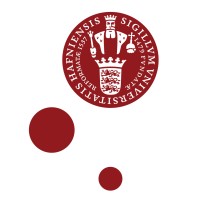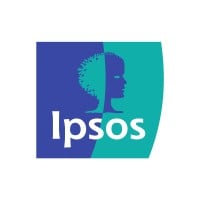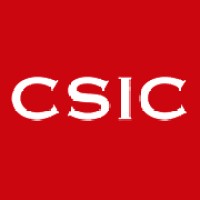
Robert Koch Institute Company Cyber Security Posture
rki.deDas Robert Koch-Institut (RKI) ist ein Bundesinstitut im Geschäftsbereich des Bundesministeriums für Gesundheit. Das RKI ist die zentrale Einrichtung der Bundesregierung auf dem Gebiet der Krankheitsüberwachung und -prävention und damit auch die zentrale Einrichtung des Bundes auf dem Gebiet der anwendungs- und maßnahmenorientierten biomedizinischen Forschung. Die Kernaufgaben des RKI sind die Erkennung, Verhütung und Bekämpfung von Krankheiten, insbesondere der Infektionskrankheiten. Zu den Aufgaben gehört der generelle gesetzliche Auftrag, wissenschaftliche Erkenntnisse als Basis für gesundheitspolitische Entscheidungen zu erarbeiten. Vorrangige Aufgaben liegen in der wissenschaftlichen Untersuchung, der epidemiologischen und medizinischen Analyse und Bewertung von Krankheiten mit hoher Gefährlichkeit, hohem Verbreitungsgrad oder hoher öffentlicher oder gesundheitspolitischer Bedeutung. Das RKI berät die zuständigen Bundesministerien, insbesondere das Bundesministerium für Gesundheit (BMG), und wirkt bei der Entwicklung von Normen und Standards mit. Es informiert und berät die Fachöffentlichkeit sowie zunehmend auch die breitere Öffentlichkeit. Im Hinblick auf das Erkennen gesundheitlicher Gefährdungen und Risiken nimmt das RKI eine zentrale „Antennenfunktion“ im Sinne eines Frühwarnsystems wahr.
RKI Company Details
robertkochinstitut
868 employees
46535
none
Research
rki.de
Scan still pending
ROB_1841136
In-progress
Between 200 and 800
This score is AI-generated and less favored by cyber insurers, who prefer the TPRM score.
 RKI Global Score
RKI Global Score.png)

Robert Koch Institute Company Scoring based on AI Models
| Model Name | Date | Description | Current Score Difference | Score |
|---|---|---|---|---|
| AVERAGE-Industry | 03-12-2025 | This score represents the average cybersecurity rating of companies already scanned within the same industry. It provides a benchmark to compare an individual company's security posture against its industry peers. | N/A | Between 200 and 800 |
Robert Koch Institute Company Cyber Security News & History
| Entity | Type | Severity | Impact | Seen | Url ID | Details | View |
|---|---|---|---|---|---|---|---|
| Robert Koch Institute | Cyber Attack | 25 | 1 | 10/2020 | ROB2318523 | Link | |
Rankiteo Explanation : Attack without any consequencesDescription: Germany's Robert Koch Institute for infectious disease control was hit by a cyber attack days before its headquarters was the target of an arson attempt. It was found that the website was knocked out for two hours by a distributed denial of service attack. No sensitive data was lost. | |||||||
Robert Koch Institute Company Subsidiaries

Das Robert Koch-Institut (RKI) ist ein Bundesinstitut im Geschäftsbereich des Bundesministeriums für Gesundheit. Das RKI ist die zentrale Einrichtung der Bundesregierung auf dem Gebiet der Krankheitsüberwachung und -prävention und damit auch die zentrale Einrichtung des Bundes auf dem Gebiet der anwendungs- und maßnahmenorientierten biomedizinischen Forschung. Die Kernaufgaben des RKI sind die Erkennung, Verhütung und Bekämpfung von Krankheiten, insbesondere der Infektionskrankheiten. Zu den Aufgaben gehört der generelle gesetzliche Auftrag, wissenschaftliche Erkenntnisse als Basis für gesundheitspolitische Entscheidungen zu erarbeiten. Vorrangige Aufgaben liegen in der wissenschaftlichen Untersuchung, der epidemiologischen und medizinischen Analyse und Bewertung von Krankheiten mit hoher Gefährlichkeit, hohem Verbreitungsgrad oder hoher öffentlicher oder gesundheitspolitischer Bedeutung. Das RKI berät die zuständigen Bundesministerien, insbesondere das Bundesministerium für Gesundheit (BMG), und wirkt bei der Entwicklung von Normen und Standards mit. Es informiert und berät die Fachöffentlichkeit sowie zunehmend auch die breitere Öffentlichkeit. Im Hinblick auf das Erkennen gesundheitlicher Gefährdungen und Risiken nimmt das RKI eine zentrale „Antennenfunktion“ im Sinne eines Frühwarnsystems wahr.
Access Data Using Our API

Get company history
.png)
RKI Cyber Security News
WHO, Africa CDC and RKI expand unique partnership to strengthen collaborative surveillance in Africa
The Health Security Partnership strengthens disease surveillance and epidemic intelligence across the African continent, enabling countries to ...
Protestors Rush Stage During Billionaire Charles Koch’s Award Speech
A video tribute to Koch Thursday night made light of the criticism, with clips of former Treasury Secretary Robert Reich and Sen. Bernie Sanders ...
United in response: China hosts inaugural Global Outbreak Alert and Response Network (GOARN) training
In a significant move to enhance emergency workforce response capacities, 67 health emergency responders from 10 countries across the Asia ...
Washington DC’s 500 Most Influential People of 2023
For our third annual edition of the Most Influential People Shaping Policy, we again sought out smart, innovative Washingtonians who care ...
Europe shares code for new coronavirus warning app
Eight countries have taken part in the project that will, on Wednesday, release the code for an app that analyzes Bluetooth signals between mobile phones.
Africa CDC, WHO and RKI Launch a Health Security Partnership to Strengthen Disease Surveillance in Africa
"The multi-country project consultation and launch meeting is a significant milestone towards strengthening surveillance and epidemic ...
Washington DC’s 500 Most Influential People
For a long time, people have moved to Washington to change the world. Now more than ever, young people are eager to see improvements to our ...
Regional experts strengthen leadership skills to better respond to disease outbreaks
Public health experts from the Western Pacific Region who are part of the Global Outbreak Alert and Response Network (GOARN) benefited from ...
National COVID-19 response assessed in Robert Koch Institute visit to Islamic Republic of Iran ahead of bilateral collaborations
“Up until a few months back in Iran, 50,000 new COVID-19 patients were identified daily in the country, where a daily toll of 700 deaths were ...

RKI Similar Companies

Københavns Universitet - University of Copenhagen
Københavns Universitet er med cirka 40.000 studerende og 9.000 medarbejdere en af Nordens største forsknings- og uddannelsesinstitutioner. Københavns Universitets mål er at drive forskning af højeste kvalitet, at tilbyde forskningsbaseret uddannelse til det højeste akademiske niveau, og at formid

Ipsos France
Chez Ipsos, nous sommes passionnément curieux des individus, des marchés, des marques et de la société. Nous aidons nos clients à naviguer plus vite et plus aisément dans un monde en profonde mutation. Nous leur apportons l'inspiration nécessaire à la prise de décisions stratégiques. Nous

Health Care Engineering Systems Center at Illinois
The Health Care Engineering Systems Center (HCESC) at the University of Illinois at Urbana-Champaign provides clinical immersion and fosters collaboration between engineers and physicians. The goal is to use our expertise in the broad areas of simulation technologies, smart health systems, data anal

CSIC
The Spanish National Research Council (Consejo Superior de Investigaciones Científicas-CSIC) is a government agency for basic and applied scientific research. It is the largest public research performing organisation in Spain, with 126 centers. El Consejo Superior de Investigaciones Científicas (

Aarhus Universitet
Aarhus Universitet blev grundlagt i 1928 og er i dag i den absolutte verdenselite på flere forskningsfelter. Aarhus Universitet (AU) er blandt verdens 10 bedste universiteter grundlagt inden for de seneste 100 år og har en lang tradition for partnerskaber med nogle af verdens bedste forskningsinst

Frequently Asked Questions (FAQ) on Cybersecurity Incidents
RKI CyberSecurity History Information
Total Incidents: According to Rankiteo, RKI has faced 1 incidents in the past.
Incident Types: The types of cybersecurity incidents that have occurred include ['Cyber Attack'].
Total Financial Loss: The total financial loss from these incidents is estimated to be {total_financial_loss}.
Cybersecurity Posture: The company's overall cybersecurity posture is described as Das Robert Koch-Institut (RKI) ist ein Bundesinstitut im Geschäftsbereich des Bundesministeriums für Gesundheit. Das RKI ist die zentrale Einrichtung der Bundesregierung auf dem Gebiet der Krankheitsüberwachung und -prävention und damit auch die zentrale Einrichtung des Bundes auf dem Gebiet der anwendungs- und maßnahmenorientierten biomedizinischen Forschung. Die Kernaufgaben des RKI sind die Erkennung, Verhütung und Bekämpfung von Krankheiten, insbesondere der Infektionskrankheiten. Zu den Aufgaben gehört der generelle gesetzliche Auftrag, wissenschaftliche Erkenntnisse als Basis für gesundheitspolitische Entscheidungen zu erarbeiten. Vorrangige Aufgaben liegen in der wissenschaftlichen Untersuchung, der epidemiologischen und medizinischen Analyse und Bewertung von Krankheiten mit hoher Gefährlichkeit, hohem Verbreitungsgrad oder hoher öffentlicher oder gesundheitspolitischer Bedeutung. Das RKI berät die zuständigen Bundesministerien, insbesondere das Bundesministerium für Gesundheit (BMG), und wirkt bei der Entwicklung von Normen und Standards mit. Es informiert und berät die Fachöffentlichkeit sowie zunehmend auch die breitere Öffentlichkeit. Im Hinblick auf das Erkennen gesundheitlicher Gefährdungen und Risiken nimmt das RKI eine zentrale „Antennenfunktion“ im Sinne eines Frühwarnsystems wahr..
Detection and Response: The company detects and responds to cybersecurity incidents through {description_of_detection_and_response_process}.
Incident Details
Incident 1: Ransomware Attack
Title: {Incident_Title}
Description: {Brief_description_of_the_incident}
Date Detected: {Detection_Date}
Date Publicly Disclosed: {Disclosure_Date}
Date Resolved: {Resolution_Date}
Type: {Type_of_Attack}
Attack Vector: {Attack_Vector}
Vulnerability Exploited: {Vulnerability}
Threat Actor: {Threat_Actor}
Motivation: {Motivation}
Incident 2: Data Breach
Title: {Incident_Title}
Description: {Brief_description_of_the_incident}
Date Detected: {Detection_Date}
Date Publicly Disclosed: {Disclosure_Date}
Date Resolved: {Resolution_Date}
Type: {Type_of_Attack}
Attack Vector: {Attack_Vector}
Vulnerability Exploited: {Vulnerability}
Threat Actor: {Threat_Actor}
Motivation: {Motivation}
Common Attack Types: As of now, the company has not encountered any reported incidents involving common cyberattacks.
Identification of Attack Vectors: The company identifies the attack vectors used in incidents through {description_of_identification_process}.
Impact of the Incidents
Incident 1: Ransomware Attack
Financial Loss: {Financial_Loss}
Data Compromised: {Data_Compromised}
Systems Affected: {Systems_Affected}
Downtime: {Downtime}
Operational Impact: {Operational_Impact}
Conversion Rate Impact: {Conversion_Rate_Impact}
Revenue Loss: {Revenue_Loss}
Customer Complaints: {Customer_Complaints}
Brand Reputation Impact: {Brand_Reputation_Impact}
Legal Liabilities: {Legal_Liabilities}
Identity Theft Risk: {Identity_Theft_Risk}
Payment Information Risk: {Payment_Information_Risk}
Incident 2: Data Breach
Financial Loss: {Financial_Loss}
Data Compromised: {Data_Compromised}
Systems Affected: {Systems_Affected}
Downtime: {Downtime}
Operational Impact: {Operational_Impact}
Conversion Rate Impact: {Conversion_Rate_Impact}
Revenue Loss: {Revenue_Loss}
Customer Complaints: {Customer_Complaints}
Brand Reputation Impact: {Brand_Reputation_Impact}
Legal Liabilities: {Legal_Liabilities}
Identity Theft Risk: {Identity_Theft_Risk}
Payment Information Risk: {Payment_Information_Risk}
Average Financial Loss: The average financial loss per incident is {average_financial_loss}.
Commonly Compromised Data Types: The types of data most commonly compromised in incidents are {list_of_commonly_compromised_data_types}.
Incident 1: Ransomware Attack
Entity Name: {Entity_Name}
Entity Type: {Entity_Type}
Industry: {Industry}
Location: {Location}
Size: {Size}
Customers Affected: {Customers_Affected}
Incident 2: Data Breach
Entity Name: {Entity_Name}
Entity Type: {Entity_Type}
Industry: {Industry}
Location: {Location}
Size: {Size}
Customers Affected: {Customers_Affected}
Response to the Incidents
Incident 1: Ransomware Attack
Incident Response Plan Activated: {Yes/No}
Third Party Assistance: {Yes/No}
Law Enforcement Notified: {Yes/No}
Containment Measures: {Containment_Measures}
Remediation Measures: {Remediation_Measures}
Recovery Measures: {Recovery_Measures}
Communication Strategy: {Communication_Strategy}
Adaptive Behavioral WAF: {Adaptive_Behavioral_WAF}
On-Demand Scrubbing Services: {On_Demand_Scrubbing_Services}
Network Segmentation: {Network_Segmentation}
Enhanced Monitoring: {Enhanced_Monitoring}
Incident 2: Data Breach
Incident Response Plan Activated: {Yes/No}
Third Party Assistance: {Yes/No}
Law Enforcement Notified: {Yes/No}
Containment Measures: {Containment_Measures}
Remediation Measures: {Remediation_Measures}
Recovery Measures: {Recovery_Measures}
Communication Strategy: {Communication_Strategy}
Adaptive Behavioral WAF: {Adaptive_Behavioral_WAF}
On-Demand Scrubbing Services: {On_Demand_Scrubbing_Services}
Network Segmentation: {Network_Segmentation}
Enhanced Monitoring: {Enhanced_Monitoring}
Incident Response Plan: The company's incident response plan is described as {description_of_incident_response_plan}.
Third-Party Assistance: The company involves third-party assistance in incident response through {description_of_third_party_involvement}.
Data Breach Information
Incident 2: Data Breach
Type of Data Compromised: {Type_of_Data}
Number of Records Exposed: {Number_of_Records}
Sensitivity of Data: {Sensitivity_of_Data}
Data Exfiltration: {Yes/No}
Data Encryption: {Yes/No}
File Types Exposed: {File_Types}
Personally Identifiable Information: {Yes/No}
Prevention of Data Exfiltration: The company takes the following measures to prevent data exfiltration: {description_of_prevention_measures}.
Handling of PII Incidents: The company handles incidents involving personally identifiable information (PII) through {description_of_handling_process}.
Ransomware Information
Incident 1: Ransomware Attack
Ransom Demanded: {Ransom_Amount}
Ransom Paid: {Ransom_Paid}
Ransomware Strain: {Ransomware_Strain}
Data Encryption: {Yes/No}
Data Exfiltration: {Yes/No}
Ransom Payment Policy: The company's policy on paying ransoms in ransomware incidents is described as {description_of_ransom_payment_policy}.
Data Recovery from Ransomware: The company recovers data encrypted by ransomware through {description_of_data_recovery_process}.
Regulatory Compliance
Incident 1: Ransomware Attack
Regulations Violated: {Regulations_Violated}
Fines Imposed: {Fines_Imposed}
Legal Actions: {Legal_Actions}
Regulatory Notifications: {Regulatory_Notifications}
Incident 2: Data Breach
Regulations Violated: {Regulations_Violated}
Fines Imposed: {Fines_Imposed}
Legal Actions: {Legal_Actions}
Regulatory Notifications: {Regulatory_Notifications}
Regulatory Frameworks: The company complies with the following regulatory frameworks regarding cybersecurity: {list_of_regulatory_frameworks}.
Ensuring Regulatory Compliance: The company ensures compliance with regulatory requirements through {description_of_compliance_measures}.
Lessons Learned and Recommendations
Incident 1: Ransomware Attack
Lessons Learned: {Lessons_Learned}
Incident 2: Data Breach
Lessons Learned: {Lessons_Learned}
Incident 1: Ransomware Attack
Recommendations: {Recommendations}
Incident 2: Data Breach
Recommendations: {Recommendations}
Key Lessons Learned: The key lessons learned from past incidents are {list_of_key_lessons_learned}.
Implemented Recommendations: The company has implemented the following recommendations to improve cybersecurity: {list_of_implemented_recommendations}.
References
Additional Resources: Stakeholders can find additional resources on cybersecurity best practices at {list_of_additional_resources}.
Investigation Status
Incident 1: Ransomware Attack
Investigation Status: {Investigation_Status}
Incident 2: Data Breach
Investigation Status: {Investigation_Status}
Communication of Investigation Status: The company communicates the status of incident investigations to stakeholders through {description_of_communication_process}.
Stakeholder and Customer Advisories
Incident 1: Ransomware Attack
Stakeholder Advisories: {Stakeholder_Advisories}
Customer Advisories: {Customer_Advisories}
Incident 2: Data Breach
Stakeholder Advisories: {Stakeholder_Advisories}
Customer Advisories: {Customer_Advisories}
Advisories Provided: The company provides the following advisories to stakeholders and customers following an incident: {description_of_advisories_provided}.
Initial Access Broker
Incident 1: Ransomware Attack
Entry Point: {Entry_Point}
Reconnaissance Period: {Reconnaissance_Period}
Backdoors Established: {Backdoors_Established}
High Value Targets: {High_Value_Targets}
Data Sold on Dark Web: {Yes/No}
Incident 2: Data Breach
Entry Point: {Entry_Point}
Reconnaissance Period: {Reconnaissance_Period}
Backdoors Established: {Backdoors_Established}
High Value Targets: {High_Value_Targets}
Data Sold on Dark Web: {Yes/No}
Monitoring and Mitigation of Initial Access Brokers: The company monitors and mitigates the activities of initial access brokers through {description_of_monitoring_and_mitigation_measures}.
Post-Incident Analysis
Incident 1: Ransomware Attack
Root Causes: {Root_Causes}
Corrective Actions: {Corrective_Actions}
Incident 2: Data Breach
Root Causes: {Root_Causes}
Corrective Actions: {Corrective_Actions}
Post-Incident Analysis Process: The company's process for conducting post-incident analysis is described as {description_of_post_incident_analysis_process}.
Corrective Actions Taken: The company has taken the following corrective actions based on post-incident analysis: {list_of_corrective_actions_taken}.
Additional Questions
General Information
Ransom Payment History: The company has {paid/not_paid} ransoms in the past.
Last Ransom Demanded: The amount of the last ransom demanded was {last_ransom_amount}.
Last Attacking Group: The attacking group in the last incident was {last_attacking_group}.
Incident Details
Most Recent Incident Detected: The most recent incident detected was on {most_recent_incident_detected_date}.
Most Recent Incident Publicly Disclosed: The most recent incident publicly disclosed was on {most_recent_incident_publicly_disclosed_date}.
Most Recent Incident Resolved: The most recent incident resolved was on {most_recent_incident_resolved_date}.
Impact of the Incidents
Highest Financial Loss: The highest financial loss from an incident was {highest_financial_loss}.
Most Significant Data Compromised: The most significant data compromised in an incident was {most_significant_data_compromised}.
Most Significant System Affected: The most significant system affected in an incident was {most_significant_system_affected}.
Response to the Incidents
Third-Party Assistance in Most Recent Incident: The third-party assistance involved in the most recent incident was {third_party_assistance_in_most_recent_incident}.
Containment Measures in Most Recent Incident: The containment measures taken in the most recent incident were {containment_measures_in_most_recent_incident}.
Data Breach Information
Most Sensitive Data Compromised: The most sensitive data compromised in a breach was {most_sensitive_data_compromised}.
Number of Records Exposed: The number of records exposed in the most significant breach was {number_of_records_exposed}.
Ransomware Information
Highest Ransom Demanded: The highest ransom demanded in a ransomware incident was {highest_ransom_demanded}.
Highest Ransom Paid: The highest ransom paid in a ransomware incident was {highest_ransom_paid}.
Regulatory Compliance
Highest Fine Imposed: The highest fine imposed for a regulatory violation was {highest_fine_imposed}.
Most Significant Legal Action: The most significant legal action taken for a regulatory violation was {most_significant_legal_action}.
Lessons Learned and Recommendations
Most Significant Lesson Learned: The most significant lesson learned from past incidents was {most_significant_lesson_learned}.
Most Significant Recommendation Implemented: The most significant recommendation implemented to improve cybersecurity was {most_significant_recommendation_implemented}.
References
Most Recent Source: The most recent source of information about an incident is {most_recent_source}.
Most Recent URL for Additional Resources: The most recent URL for additional resources on cybersecurity best practices is {most_recent_url}.
Investigation Status
Current Status of Most Recent Investigation: The current status of the most recent investigation is {current_status_of_most_recent_investigation}.
Stakeholder and Customer Advisories
Most Recent Stakeholder Advisory: The most recent stakeholder advisory issued was {most_recent_stakeholder_advisory}.
Most Recent Customer Advisory: The most recent customer advisory issued was {most_recent_customer_advisory}.
Initial Access Broker
Most Recent Entry Point: The most recent entry point used by an initial access broker was {most_recent_entry_point}.
Most Recent Reconnaissance Period: The most recent reconnaissance period for an incident was {most_recent_reconnaissance_period}.
Post-Incident Analysis
Most Significant Root Cause: The most significant root cause identified in post-incident analysis was {most_significant_root_cause}.
Most Significant Corrective Action: The most significant corrective action taken based on post-incident analysis was {most_significant_corrective_action}.
What Do We Measure?
















Every week, Rankiteo analyzes billions of signals to give organizations a sharper, faster view of emerging risks. With deeper, more actionable intelligence at their fingertips, security teams can outpace threat actors, respond instantly to Zero-Day attacks, and dramatically shrink their risk exposure window.
These are some of the factors we use to calculate the overall score:
Identify exposed access points, detect misconfigured SSL certificates, and uncover vulnerabilities across the network infrastructure.
Gain visibility into the software components used within an organization to detect vulnerabilities, manage risk, and ensure supply chain security.
Monitor and manage all IT assets and their configurations to ensure accurate, real-time visibility across the company's technology environment.
Leverage real-time insights on active threats, malware campaigns, and emerging vulnerabilities to proactively defend against evolving cyberattacks.




